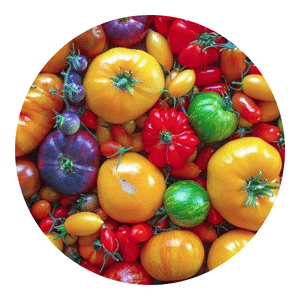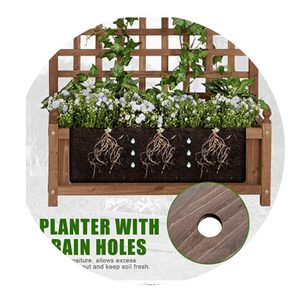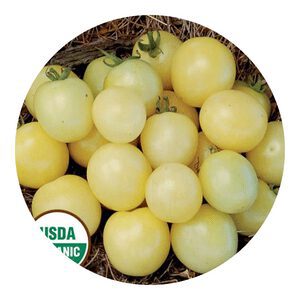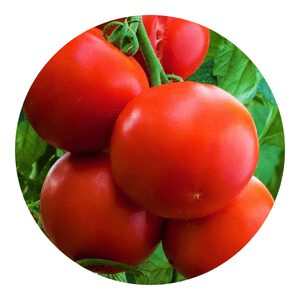How to grow Yellow Plum Grape Tomato
This guide is ideal for gardeners of all levels of experience, from those who are just starting out to those who have been growing tomatoes for years.
With Chappy’s tips, anyone can learn how to grow delicious yellow plum grape tomatoes.
The grape tomato is a great choice for those who want a colorful summer tomato. They are small, but they pack a big flavor punch.
They are best eaten fresh, but can also be used in salads or as part of a cookout dish.
Yellow Plum Menu
Tomatoes are a fruit that is enjoyed by many. There are different types of tomatoes that can be grown, and each has its own unique flavor.
Yellow plum grape tomatoes are a type of tomato that has a sweet and tart flavor.
This type of tomato is smaller than the average tomato, and it is grape-shaped.
The skin of the yellow plum grape tomato is thin and has a slightly orange hue to it.
These tomatoes are great for snacking on or adding to salads.
The taste of a yellow plum grape tomato
Tomatoes are a fruit that is grown all over the world. There are many different types of tomatoes, from the small cherry tomato to the large beefsteak tomato.
Tomatoes can be eaten raw or cooked. They are a good source of vitamins A and C, and are a low-calorie food.
One type of tomato is the yellow plum grape tomato.
This type of tomato is small, about the size of a grape, and has a sweet taste. It is grown in California and Arizona.
How to grow Yellow Plum Grape Tomato
Gardening is a great way to relax and enjoy the outdoors while creating something beautiful.
Tomatoes are among some of the most popular vegetables to grow, and Yellow Plum Grape Tomato is no exception.
This variety of tomato is a small and prolific producer that provides a sweet flavor in salads or as an addition to sauces and other dishes.
Growing your own Yellow Plum Grape Tomato plants at home can be rewarding and delicious, but it requires careful planning and tending.
Soil Preparation
Soil preparation is a very important step when planting any type of vegetable or fruit.
The type of soil you have, and the preparation you do to the soil, will determine how well your plants grow and produce.
For Yellow Plum Grape Tomatoes, you will want to have a soil pH of 6.0-6.8. If your soil is not within this range, you can adjust it by using limestone or sulfur.
You will also want to add organic matter to your soil before planting, such as compost, manure, or leaves.
This will help to improve the structure and fertility of the soil.
Ripe yellow plums ablaze Bringing sweet sunshine rays Gifted with divine flavor, Fragrant in aroma's savor Growing strong with vigor. Taste of summer in each bite, Deliciousness extreme delight! Grape tomato growing too, Cheerful red and round fruits view!
Chappy The Gardener
Watering and Feeding Your Tomato Plants
In order to have a bountiful grape tomato harvest, you’ll need to water and feed your plants.
Grape tomatoes are a type of cherry tomato that are oblong in shape.
They grow on vines and can be eaten fresh or used in recipes.
Here are some tips on watering and feeding your grape tomato plants:
When watering your plants, make sure to give them enough water so that the soil is wet at least six inches deep.
You can tell if the soil is wet enough by sticking your finger in the soil. If the soil is dry below six inches, then you’ll need to water your plants.
Feed your plants with a organic fertilizer once a month.
Harvesting Yellow Plum Grape Tomatoes
With a little more than two months until the first frost, gardeners are getting their last-minute planting in.
For those looking to plant something a little different this year, grape tomatoes might be the way to go.
Grape tomatoes are small, sweet and prolific plants that can be harvested from early summer until the first frost.
The best part is that they grow on a vine, giving them a decorative appeal in the garden.
Propagating New Tomato Plants from Cutting
Tomatoes are a popular garden vegetable. They are easy to grow and come in a variety of colors and sizes.
Some gardeners like to start their tomato plants from seeds, but others prefer to propagate new tomato plants from cuttings.
This is a quick and easy process that can be done in late winter or early spring.
Companion plants
Companion plants play an important role in the success of gardening.
When done correctly, they can help plants to thrive and provide necessary nutrients for maximum health.
In this article, we will explore the best companion plants for a Yellow Plum Grape Tomato garden.
We’ll look at what to plant alongside a yellow plum grape tomato, as well as how to create an ideal growing environment for both varieties.
With some simple tips and tricks, you can ensure that your yellow plum grape tomato garden is thriving with healthy and delicious fruits!
When it comes to choosing companion plants for your yellow plum grape tomatoes, look no further than herbs such as basil or oregano.
Not only do these aromatic herbs pair nicely with the sweet taste of the tomatoes but they are also known to deter pests from nearby vegetables.
Beans
Tomatoes are a great vegetable to grow in your garden, but did you know that they have companion plants?
Beans are one of the best companion plants for tomatoes. They help to improve the flavor of the tomatoes, and they also help to improve the health of the tomato plants.
The beans help to fix nitrogen in the soil, which is a nutrient that is essential for healthy tomato plants.
Basil
Carrots
While tomatoes are a popular garden vegetable, many gardeners don’t realize that they can be companion planted with carrots.
Carrots and tomatoes are both members of the nightshade family, and as such, they share similar nutrient needs.
Companion planting carrots with tomatoes can help to improve the overall health of your tomato plants, and it can also help to improve the yield of your harvest.
In addition, companion planting carrots with tomatoes can help to deter harmful pests from attacking your plants.
Celery
Chives
Tomatoes are a great companion plant for chives.
Chives improve the flavor of tomatoes and repel harmful pests.
Plant chives near your tomatoes to keep pests away and improve the taste of your tomatoes.
Dill
When planting tomatoes in your garden, it’s a good idea to companion plant them with dill.
Dill is a fragrant herb that helps repel pests like aphids and spider mites from your tomatoes.
It also helps to improve the growth and flavor of your tomatoes.
Other plants that make good companions for tomatoes include basil, chives, garlic, and marigolds.
How to grow Yellow Plum Grape Tomato hydroponically
Grow your own Yellow Plum Grape Tomato in a fraction of the time and with minimal effort using hydroponic growing methods.
Hydroponic gardening is a great way to grow food with limited space, no soil, and almost no maintenance required.
The process of growing food hydroponically relies on nutrient-rich water being delivered directly to the plant’s root system instead of relying on soil.
With this method, you can have ripe tomatoes as soon as two weeks after planting!
Here are some tips for how to grow Yellow Plum Grape Tomato hydroponically.
First, choose a container or reservoir that will hold enough water for your plants.
Make sure it has good drainage so that excess water can be easily released from the roots.
How to grow Yellow Plum Grape Tomato aquaponics
Are you looking for a unique, delicious way to grow your own tomatoes?
Aquaponics is an innovative and sustainable way of gardening that requires no soil, allowing your plants to flourish without the use of harsh chemicals.
Growing yellow plum grape tomatoes in aquaponics can be a fun and rewarding project that yields great results with minimal effort.
Aquaponics is similar to hydroponics, but it uses fish waste as fertilizer instead of nutrients added in water.
This natural environment provides the perfect habitat for raising a variety of fruits and vegetables.
For optimal growth, yellow plum grape tomatoes need plenty of sunlight and warmth.
The ideal temperature range is between 65-80 degrees Fahrenheit during the day and 55-65 degrees Fahrenheit at night.
Additionally, providing adequate air circulation helps reduce the risk of disease and pests.
How to grow Yellow Plum Grape Tomato in a pot or raised beds
Yellow Plum Grape Tomatoes are a delicious and healthy snack, perfect for any summertime activity.
Growing the tomatoes in a pot or raised bed allows you to have complete control over their environment, providing the ideal conditions for a successful harvest.
With just a few simple steps, you can cultivate your own Yellow Plum Grape Tomatoes with ease!
The first step is to choose the right pot or raised bed for your plants.
Make sure it has adequate drainage – about one inch of space between the bottom and soil – as well as lots of sunlight exposure.
Then fill it up with nutrient-rich soil such as compost or manure and mix in some sand to help improve drainage.
When planting your seeds, leave around 12 inches of space between each one for optimal growth.
Water frequently and use fertilizer every two to three weeks when needed.
In conclusion, the yellow plum grape tomato guide by chappy the gardener is a great resource for anyone interested in growing this unique variety of tomato.
If you have any questions, please feel free to ask in the comments below.
Thanks for reading!
Tomatoes Seeds FAQ
When it comes to organic tomatoes, there are a few different types that stand out as the best to grow.
First, the Roma tomato is a good option for those who want a sauce or canning tomato. It has a lower water content than other varieties, which makes it ideal for breaking down into sauce.
Second, the Beefsteak tomato is perfect for those who want a large and juicy slicing tomato. These tomatoes can get up to two pounds each, and have a rich flavor that makes them great for sandwiches and salads.
Finally, the Cherry tomato is a good choice for those who want a sweet and bite-sized snack. These tomatoes are perfect for popping in your mouth or adding to a fruit salad.
Organic tomatoes are those that are grown without the use of synthetic pesticides or fertilizers. They are also not genetically modified. To know if your tomatoes are organic, you can look for the USDA Organic label.
This label means that the tomatoes were grown in accordance with the USDA’s National Organic Program
standards. If you don’t see this label, you can ask the grower or retailer how the tomatoes were grown.
Organic tomatoes tend to cost more than conventionally-grown tomatoes because they require more labor and management. The increased cost is worth it for many people, knowing that they are eating fruits and vegetables that are free of harmful chemicals.
Some people also believe that organic tomatoes taste better than those that are not organic.
Organic tomatoes seeds have several benefits that make them a great choice for gardeners. One benefit is that they are not treated with chemicals. This means that they are safe to eat and do not contain any harmful toxins.
Another benefit is that organic tomatoes seeds are more resistant to pests and diseases. This means that your plants will be healthier and produce more fruit.
Finally, organic tomatoes seeds tend to produce tastier fruit than non-organic seeds.
This is because they are not grown with the use of synthetic fertilizers or pesticides.
There are many factors to consider when choosing the best organic tomatoes seeds. The type of tomato you want to grow, the climate you live in, and your personal preferences will all play a role in what type of seed you choose.
If you are looking for a specific type of tomato, such as a cherry tomato or heirloom tomato, make sure to look for seeds that are labeled as such. You can find these seeds at most garden stores or online retailers.
If you live in an area with a shorter growing season, look for tomato seeds that have a shorter maturity time. There are also varieties of tomatoes that are bred to tolerate colder temperatures, so if you live in a cooler climate, look for those varieties.
Finally, think about the taste and texture of the tomatoes you want to grow.
Organic tomatoes can take anywhere from 60 to 80 days to grow. This is depending on the type of tomato, the climate, and whether or not you are growing them indoors or outdoors.
The first thing you need to do is plant the seeds. You can do this by starting them indoors in small pots about 6-8 weeks before the last expected frost. Once the seedlings have 2-3 true leaves, they can be transplanted outside.
Tomatoes need a lot of sun and warmth to grow well, so make sure they are in a spot that gets at least 8 hours of sunlight a day.
They also need consistent moisture, but too much water can lead to problems like blossom end rot and cracked fruit.
Click To Grow
Helps Us Grow – Share If You Like



















